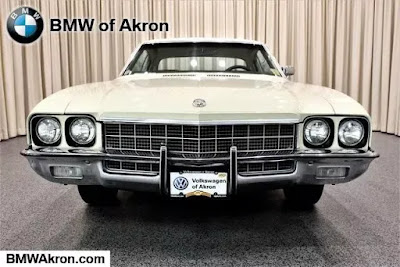Just as you think you don't have any influence on your grown kids along comes a circumstance that lets you know you still have some sway in their life decisions. Such was the case recently when our twenty-two year old, freshly graduated from college and now gainfully employed older son bought himself a 2017 Chevrolet Camaro LT.
Now, being the son of a "car guy" you'd think his buying something like this would have been a given but understand his mother is a risk aversive, pragmatic woman. At the behest of her to buy something "sensible and practical", the process of his purchasing a car started out as far from a sports car as one could get - road testing a 2014 Mazda 6.

There's absolutely nothing wrong with the Mazda 6. In fact, I happen to think it's one of the prettiest sedans on the market today regardless of price point; but it's still a four door sedan. Nicely styled with front wheel drive and amply powered by a fuel efficient, in line four cylinder engine, there's not much to not like about a "6". Unless, of course, you're like me and the thought of driving something with four doors, that's not a full size SUV,, knots up your insides. Still, being the devoted father some accuse of me being, I went with the flow and joined my son on his first traipse into purchasing a car on his own. Meanwhile, I schemed. Oh, how I schemed.

On our way to the dealership where the "6" was I had him drive so that I could continue to peruse various car websites in search of anything (I found) more alluring than what we were going to look at. And, wouldn't you know it? I found it; a super low mileage, base model 2010 Dodge Challenger that was for sale not far from the dealership we were going to. "Hey, look at this when we get to a red light" I hissed as my devil horns pushed my ball cap all but off my head. Enraptured, he insisted we set course immediately not for the Mazda dealership but for the Chevrolet dealership where the Challenger was.

While my son is not as impassioned by automobiles to the extent that I am, compared to most "kids" today he's a relative car geek. I knew he'd love the Challenger and that black on black Challenger SE that was dressed up to look like an R/T didn't disappoint him. On the test drive he was fairly impressed with its overall road going dynamics but compared to the 1996 Camaro he was driving, that rides and handles like a flimsy, rickety-rackety old carnival ride, most anything from the last ten years would feel like a nimble, rolling bank vault to him.

Styled, of course, after the painfully magnificent 1970-1974 Challengers of yore, it had, and surprisingly so, many of the same interior quirks of the original. Specifically that the interior was not nearly as spacious as the bulky exterior would let you believe that it should be. Visibility was also, and this is atypical today of sporty two door cars these days, dreadful. Since he knows what "real power" in a car is like having spent considerable time with my 2005 Ford Mustang GT, he also found the Challenger's 3.5 liter V-6 to be lacking in the oomph department. Still, for his first car purchase, he could do a whole lot worse.

After the test drive we couldn't get the numbers to align with where my son felt comfortable and with the car being as old as it was, for the money, the lack of contemporary equipment like a back up camera and blue tooth didn't seem worth it. At the end of the day, that Challenger was just an old car with low mileage and we (he) passed on it but the dye was set. He wanted something that was more than just a car.
Much to the relative disapproval of his mother, his test drive of the Mazda 6 drove that sentiment home further. The 6 was exactly what we thought it was going to be and in many ways should have been - a handsome and practical "family car" but it lacked the verve and moxie of even that base model Challenger. We went through the cursory process of crunching numbers after the test drive and the deal on the 6 was almost too good to pass on. Whether he knew it or not, he had set his mind on something at that time and the Mazda 6 just wasn't going to do it.
In the end, I had little influence on his ultimate decision as to what specific car he'd buy. Much as I tried to convince him to take my 2005 Ford Mustang GT off my hands, he had his mind sent on getting soemthing that was his and his only and not "Mom or Dad's" car. And even if he ended up with something more practical, if he was happy with whatever then, most importantly, I'd be happy too.
Mom's happy as well. The dog too.





















































